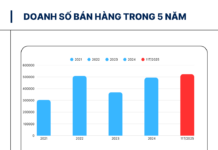According to the current Social Insurance Law, the average monthly salary used to calculate retirement pensions and lump-sum allowances for employees is based on the average monthly salary of their years of social insurance contributions prior to retirement.
Specifically, for employees who participated in social insurance before January 1, 1995, the average of the last 5 years of social insurance contributions before retirement is considered. For those who joined between January 1, 1995, and December 31, 2000, the average of the last 6 years is taken. From January 1, 2001, to December 31, 2006, it’s the average of the last 8 years, and from January 1, 2007, to December 31, 2015, it’s the average of the last 10 years.
For those who joined between January 1, 2016, and December 31, 2019, the average of the last 15 years of contributions is used. Employees who participated between January 1, 2020, and December 31, 2024, will have their averages calculated based on the last 20 years, and those who join from January 1, 2025, onwards will have their entire contribution history considered.

Retirement pensions for employees in the non-state sector are calculated based on the average monthly salary of their entire participation period.
For employees whose entire social insurance contribution history is based on a salary determined by their employer, the average monthly salary of their entire contribution history is used…
Prior to the National Assembly’s passage of the amended Social Insurance Law in late June, some opinions expressed during consultation sessions suggested that even though the entire contribution history is not considered, the average monthly salary used to calculate retirement pensions and lump-sum allowances for employees in the state sector is still not high because it is based on a low base salary and salary coefficient, while the price fluctuation coefficient is not commensurate. Therefore, it is necessary to adjust the price fluctuation coefficient to improve the benefits for employees.
Additionally, some comments pointed out a lack of fairness in the way the average monthly salary for calculating retirement pensions and lump-sum allowances is determined between the state and enterprise (non-state) sectors.
In particular, as it is based on the average monthly salary of the entire participation period, and before 2009, the salaries of employees in the enterprise sector were very low (due to the absence of regulations on regional minimum wages), even with a long contribution history, the retirement pensions received by employees are insufficient for living.
The delegates proposed that for those who participated in social insurance before 2014, only the average of the last 20 years should be considered. For those who joined in 2015 and later, the entire contribution history will be taken into account.

Due to low contribution levels, retirement pensions for employees in the state sector are also not high.
However, the recently passed amended Social Insurance Law largely maintains the provisions on the average monthly salary used to calculate retirement pensions and lump-sum allowances as stipulated in the 2014 Social Insurance Law.
Explaining this decision, the National Assembly Standing Committee stated that in the Government’s reports on the absorption, explanation, and editing of the draft Social Insurance Law, as well as on the content of salary reforms, adjustments to retirement pensions, social insurance allowances, preferential allowances for people with merit, and social allowances from July 1, 2024, it is clear that the implementation of salary reform policies will follow a roadmap that is appropriate to the actual situation, and there is no immediate abolition of the base salary, salary coefficient, or significant changes that would require an immediate adjustment in the method of calculating the average monthly salary as a basis for social insurance contributions for calculating retirement pensions and one-time social insurance allowances.
Moreover, the method of calculating the average monthly salary as a basis for social insurance contributions to calculate retirement pensions and one-time social insurance allowances is a decisive factor in the formula for calculating retirement pensions and directly affects the interests of participants and the ability to balance the social insurance fund. Therefore, any changes need to be comprehensively and thoroughly evaluated. As the impact of changes could not be assessed, the National Assembly Standing Committee requested the National Assembly to maintain the provisions as proposed in the draft Law.
Adjustment of the salary basis for compulsory social insurance contributions (Article 73 of the 2024 Amended Social Insurance Law)
1. The salary basis for compulsory social insurance contributions to calculate the average as prescribed in Article 72 of this Law for employees subject to the state-regulated salary regime shall be adjusted as follows:
a) For employees who started participating in social insurance before January 1, 2016, the adjustment shall be made based on the reference level at the time of retirement benefit entitlement;
b) For employees who started participating in social insurance from January 1, 2016, onwards, the adjustment shall be made as prescribed in Clause 2 of this Article.
2. The salary basis for compulsory social insurance contributions to calculate the average as prescribed in Article 72 of this Law for employees subject to the salary regime determined by the employer shall be adjusted based on the consumer price index of each period according to the Government’s regulations.
How much will you receive for monthly pension after retiring in 2024 and contributing to social insurance for 25 years?
The provision in the Social Security Law of 2014, as amended by Article 1, Section 219 of the Labor Code of 2019, states that employees who have reached the eligible age and have contributed to the Social Security Fund for a minimum of 20 years are entitled to receive a pension.









































